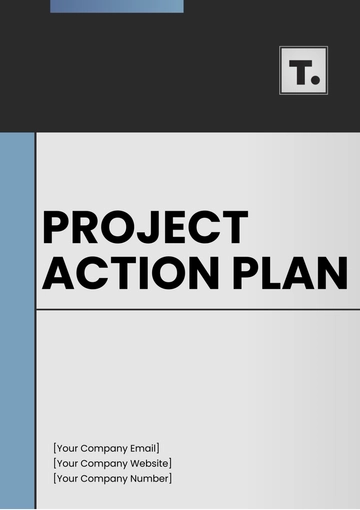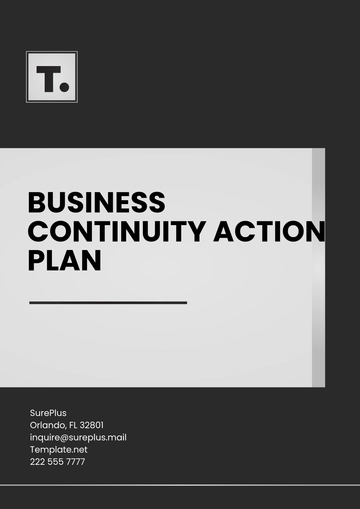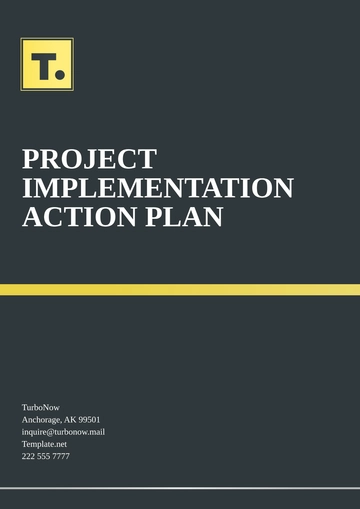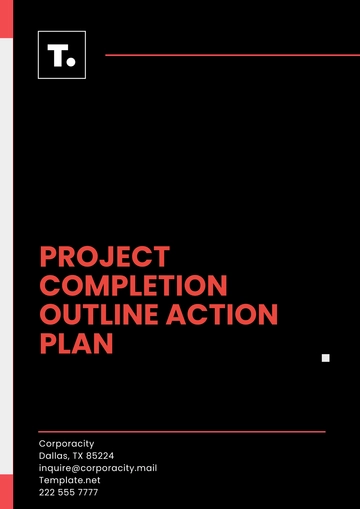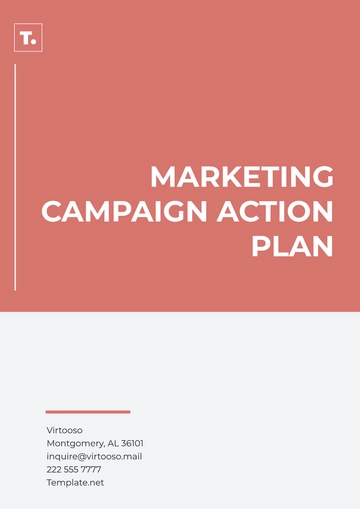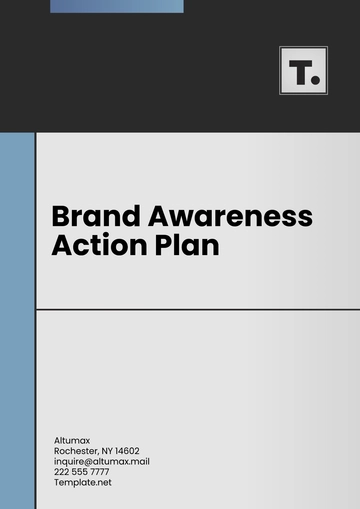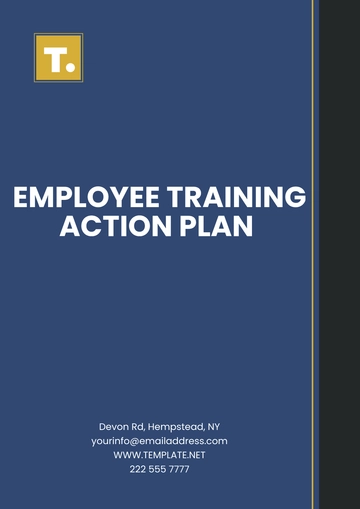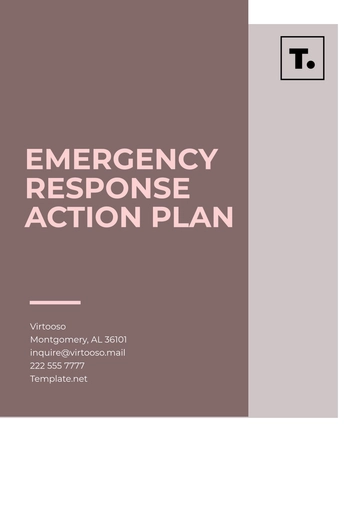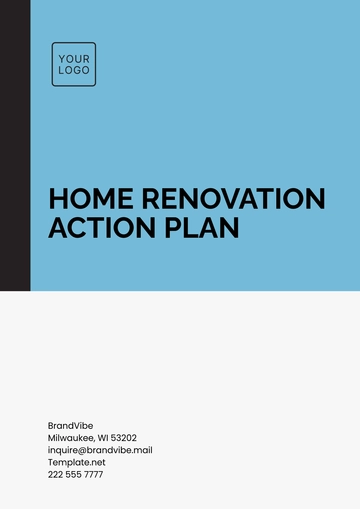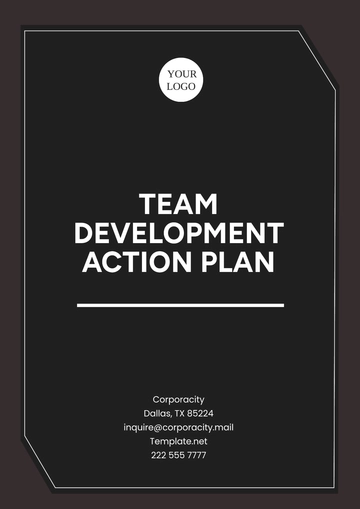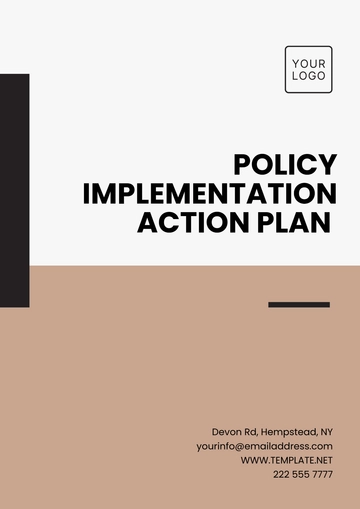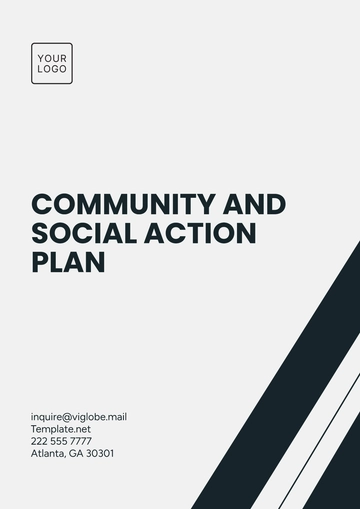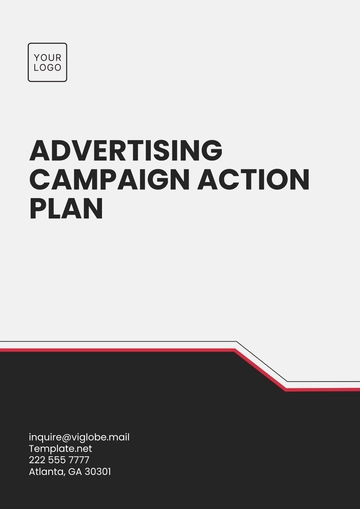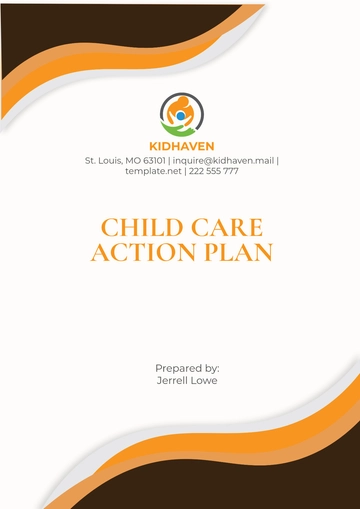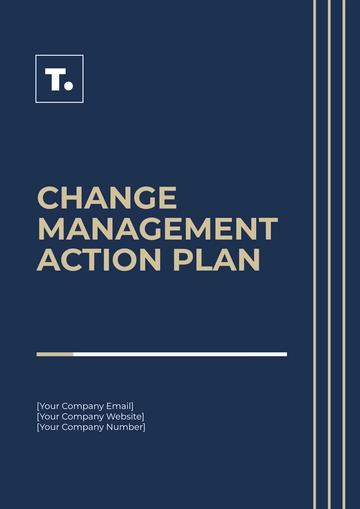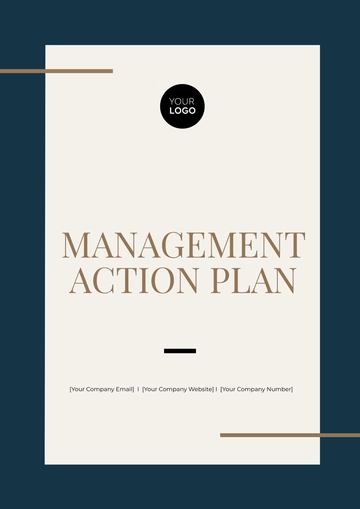Free Nursing Home Legal Compliance Action Plan
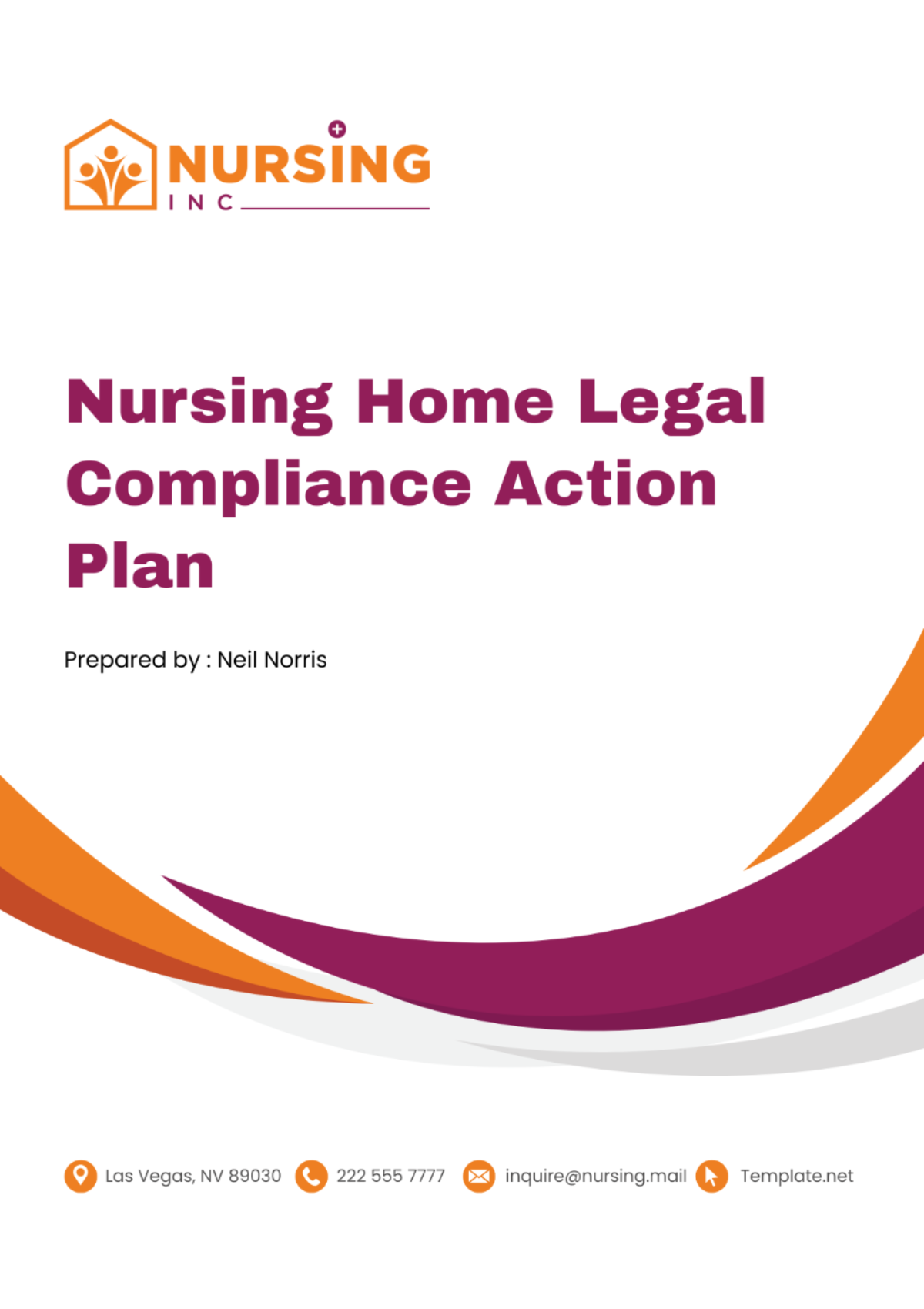
I. Introduction
This document serves as a comprehensive Legal Compliance Action Plan of [Your Company Name]. This plan is designed to ensure that the nursing home operates in full compliance with all relevant legal and regulatory guidelines. It outlines the steps that will be taken to identify potential areas of non-compliance, mitigate risks, and implement corrective actions when necessary.
A. Purpose of the Action Plan
This action plan aims to ensure:
Legal Compliance: The action plan outlines the steps that will be taken to ensure that the nursing home operates within the boundaries of all relevant laws and regulations. This is crucial to avoid any legal complications and to ensure smooth operations.
Risk Mitigation: The plan includes strategies for identifying potential risks and taking proactive steps to mitigate these risks before they turn into violations. This proactive approach helps in maintaining the trust of the residents and their families.
Corrective Actions: It provides guidelines for implementing corrective actions in case non-compliance or potential violations are identified. This ensures that any issues are promptly addressed and rectified, thereby maintaining the high standards of care provided by the nursing home.
Continuous Improvement: The plan emphasizes the importance of continuous improvement in maintaining legal compliance. It encourages regular review and updating of policies and procedures to keep up with the latest regulations and best practices in the industry.
Transparency and Accountability: It promotes transparency and accountability in the nursing home’s operations. It includes provisions for regular audits and a confidential compliance hotline, which encourage openness and foster a culture of compliance.
B. Scope of the Action Plan
The scope of this action plan extends to all areas of operation within the nursing home that are subject to legal and regulatory oversight:
Operational Compliance: The action plan covers all aspects of the nursing home’s operations, including patient care, employee conduct, data privacy, and facility management. This comprehensive coverage ensures that all areas of operation are in compliance with the relevant laws and regulations.
Regulatory Compliance: It ensures compliance with all federal, state, and local regulations pertaining to health care and assisted living institutions. This includes regulations related to patient rights, quality of care, data privacy, and safety protocols.
Policy Implementation: It includes guidelines for creating and implementing policies that comply with all relevant laws and regulations. These policies provide clear instructions to the staff and help in maintaining consistency in the nursing home’s operations.
Staff Training: The plan recognizes the importance of staff training in maintaining legal compliance. It includes provisions for regular training sessions to ensure that the staff are aware of the policies and understand how to implement them in their daily work.
Continuous Monitoring: It emphasizes the importance of continuous monitoring in maintaining legal compliance. It includes provisions for regular audits and ongoing monitoring efforts to detect any potential issues at an early stage.
C. Importance of the Action Plan
The action plan plays a crucial role in the successful operation of the nursing home:
Maintaining Legal Compliance: The plan serves as a guide for maintaining legal compliance. By following the steps outlined in the plan, the nursing home can ensure that it operates within the boundaries of all relevant laws and regulations.
Mitigating Risks: It helps in identifying potential risks and taking proactive steps to mitigate these risks. This can prevent potential violations and help the nursing home avoid legal complications.
Improving Service Quality: By ensuring legal compliance, the action plan also contributes to improving the quality of services provided by the nursing home. It helps in maintaining high standards of care, which is crucial for the well-being of the residents.
Building Trust: It helps in building trust with the residents and their families. By demonstrating its commitment to legal compliance, the nursing home can assure them that it operates in a transparent and ethical manner.
Enhancing Reputation: It also enhances the reputation of the nursing home. A nursing home that is known for its commitment to legal compliance is likely to be viewed more favorably by potential residents, their families, and the wider community.
Facilitating Continuous Improvement: The plan facilitates continuous improvement by encouraging regular review and updating of policies and procedures. This helps the nursing home to keep up with the latest regulations and best practices in the industry. It also fosters a culture of continuous learning and improvement within the nursing home.
II. Action Plan
In the table below, we have outlined a timeline for the implementation of our compliance plan, along with assignments of responsibility to specific roles.
Action | Responsible Party | Deadline |
|---|---|---|
Regulatory Requirements | Compliance Officer | 1 Month |
Create Compliance Policies | Senior Management & Compliance Officer | 3 Months |
Establish Staff Training Program | Human Resources & Training Department | 4 Months |
Set up Compliance Hotline | Compliance Officer & IT Department | 6 Months |
Implement Auditing & Monitoring Systems | Compliance Officer & Quality Assurance Team | 8 Months |
A. Understanding Regulatory Requirements
The first step in our action plan is to understand the regulatory requirements. This involves:
Research Laws: The Compliance Officer will conduct a comprehensive review of all relevant state and federal laws. This research will provide a solid foundation for the development of our compliance policies and procedures.
Attend Training Seminars: The Compliance Officer will regularly attend training seminars to stay updated on the latest legal developments. These seminars will provide valuable insights into the interpretation and application of the laws.
Subscribe to Industry Bulletins: The Compliance Officer will subscribe to industry bulletins to receive updates about any changes in the laws or regulations. These bulletins will ensure that our nursing home stays current with the evolving legal landscape.
Develop a Regulatory Compliance Checklist: Based on the understanding of the regulatory requirements, the Compliance Officer will develop a checklist to ensure all aspects of compliance are covered.
Regular Review of Regulatory Requirements: The Compliance Officer will conduct regular reviews of the regulatory requirements to ensure that any updates or changes in the laws are incorporated into our compliance plan.
B. Creating Compliance Policies
The next essential step is to create comprehensive compliance policies tailored to our unique setting. This will include:
Develop Code of Conduct: Senior Management and the Compliance Officer will develop a Code of Conduct that outlines the ethical standards and behaviors expected of all employees. This Code of Conduct will serve as a guide for all employees in their daily interactions and decision-making processes.
Create Patient Care Guidelines: Specific guidelines on patient care practices will be created to ensure that the nursing home provides high-quality care that complies with all relevant laws and regulations. These guidelines will cover a wide range of topics, from patient rights to infection control.
Establish Infraction Procedures: Procedures will be established to guide the response to any in-house infractions. This will include steps for reporting the infraction, investigating the issue, and implementing corrective actions.
Develop Data Privacy Policies: Given the sensitive nature of the data handled by the nursing home, specific policies will be developed to ensure the privacy and security of this data.
Create Employee Training Programs: Based on the compliance policies, specific training programs will be created for employees. These programs will ensure that all employees understand the policies and know how to implement them in their daily work.
C. Establishing Staff Training Program
Staff training is a crucial component of our nursing home’s legal compliance plan. This includes the following:
Develop Training Curriculum: The Human Resources and Training Department will develop a training curriculum that covers our compliance policies and procedures. This curriculum will be designed to be engaging and informative, ensuring that employees fully understand our policies and procedures.
Conduct Regular Training: Regular training sessions will be conducted to ensure that all employees are aware of and understand our compliance policies and procedures. These sessions will be interactive, allowing employees to ask questions and clarify any doubts they may have.
Emphasize Role in Compliance: During the training sessions, the role of every staff member in maintaining compliance will be emphasized. This will help to create a culture of compliance within the nursing home.
Evaluate Training Effectiveness: The effectiveness of the training program will be regularly evaluated through assessments and feedback from employees. This will help to identify any areas of the training program that may need improvement.
Update Training Program: The training program will be regularly updated to incorporate any changes in our policies or procedures, as well as any changes in the laws or regulations.
D. Setting up Compliance Hotline
We will establish a confidential compliance hotline, which can be used by employees to report any potentially illegal or unethical behavior they witness:
Establish Hotline: The Compliance Officer and IT Department will work together to establish a confidential compliance hotline. This hotline will provide a safe and anonymous way for employees to report any concerns they may have.
Promote Hotline: The hotline will be promoted to all employees to ensure that they are aware of this resource. This will be done through internal communications, training sessions, and posters in the nursing home.
Respond to Reports: The Compliance Officer will be responsible for responding to any reports received through the hotline and taking appropriate action. This will ensure that all reports are taken seriously and addressed promptly.
Monitor Hotline Usage: The usage of the hotline will be regularly monitored to identify any trends or areas of concern. This will provide valuable insights into the effectiveness of the hotline and any areas that may need improvement.
Review and Update Hotline Procedures: The procedures for the hotline will be regularly reviewed and updated to ensure that it continues to serve as an effective tool for reporting concerns.
E. Implementing Auditing & Monitoring Systems
To protect against potential non-compliance, we will implement the following:
Establish Audit Procedures: The Compliance Officer and Quality Assurance Team will establish procedures for conducting regular internal and external audits. These procedures will ensure that all areas of the nursing home’s operations are regularly reviewed for compliance.
Conduct Audits: Regular audits will be conducted to monitor compliance with our policies and procedures. These audits will provide a comprehensive review of our operations and identify any areas of non-compliance.
Implement Monitoring Systems: In addition to audits, ongoing monitoring systems will be implemented to provide continuous oversight of our operations. These systems will help to detect any potential issues at an early stage, allowing us to take corrective action promptly.
Review Audit and Monitoring Results: The results of the audits and monitoring systems will be regularly reviewed to identify any trends or areas of concern. This will provide valuable insights into our compliance status and help us to continuously improve our compliance measures.
Update Audit and Monitoring Procedures: The audit and monitoring procedures will be regularly updated to ensure that they continue to be effective in detecting and addressing any areas of non-compliance.
The Action plan is a comprehensive roadmap that outlines the steps to be taken to ensure legal compliance in all aspects of the nursing home’s operations. It includes understanding regulatory requirements, creating compliance policies, establishing a staff training program, setting up a compliance hotline, and implementing auditing and monitoring systems. Each action item is assigned to a responsible party and has a specific deadline to ensure timely completion. The plan emphasizes the importance of understanding and adhering to all relevant laws and regulations, creating clear and comprehensive policies, and fostering a culture of compliance within the nursing home.
III. Risk Management Strategy
Creating a risk management strategy involves identifying potential risks and planning for how to address them. By actively seeking to identify potential areas of non-compliance, we can take proactive steps to mitigate these risks before they turn into violations.
A. Identifying Potential Risks
The first step in creating a risk management strategy is to identify potential risks. This involves the following:
Reviewing Operations: We will conduct a comprehensive review of our operations to identify any potential risks. This will involve a detailed examination of all aspects of our operations, from patient care to facility management.
Reviewing Policies: We will also review our policies to ensure that they are comprehensive and do not contain any gaps that could lead to non-compliance. This will involve a thorough examination of all our existing policies and procedures.
Identifying Risk Factors: Based on our review, we will identify any risk factors that could potentially lead to non-compliance. This will involve a detailed analysis of the identified risks and the development of strategies to mitigate these risks.
Assessing Impact of Identified Risks: For each identified risk, we will assess the potential impact on our operations. This will help us prioritize our risk mitigation efforts.
Developing Risk Profiles: We will develop risk profiles for each identified risk. These profiles will provide a comprehensive overview of the risk, including its potential impact and the measures needed to mitigate it.
Regularly Updating Risk Identification Process: The process of identifying risks will be regularly updated to ensure that it continues to effectively identify any new or emerging risks.
B. Planning for Risk Mitigation
Once potential risks have been identified, the next step is to plan for how to mitigate these risks. This includes:
Develop Risk Mitigation Strategies: For each identified risk, we will develop a strategy for how to mitigate that risk. This will involve a detailed analysis of the risk and the development of a comprehensive strategy to address it.
Establish Risk Mitigation Procedures: We will establish procedures for implementing our risk mitigation strategies. These procedures will provide clear guidelines for how to address each identified risk.
Monitor Risk Mitigation Efforts: We will monitor our risk mitigation efforts to ensure that they are effective in reducing the identified risks. This will involve regular reviews of our risk mitigation strategies and procedures.
Review and Update Risk Mitigation Strategies: Our risk mitigation strategies will be regularly reviewed and updated to ensure that they continue to effectively mitigate the identified risks.
Develop Contingency Plans: For each identified risk, we will develop a contingency plan. This plan will outline the steps to be taken in case the risk materializes despite our mitigation efforts.
Train Staff on Risk Mitigation Procedures: We will conduct training sessions to ensure that all staff members are aware of our risk mitigation procedures and understand how to implement them.
Communicate Risk Mitigation Strategies to Stakeholders: We will communicate our risk mitigation strategies to all relevant stakeholders. This will include residents, their families, and regulatory bodies.
Regularly Review and Update the Risk Mitigation Plan: The risk mitigation plan will be regularly reviewed and updated to ensure that it continues to effectively mitigate the identified risks.
IV. Corrective Action Procedures
The Corrective Action Procedures (CAPs) are a critical component of the Action plan for [Your Company Name]. These procedures provide a clear and structured approach to addressing any instances of non-compliance or potential violations that may be identified during audits or through reports. The following table outlines the key steps involved in our corrective action procedures:
Step | Procedure | Responsible Party |
|---|---|---|
1 | Outline Response Process | Compliance Officer |
2 | Assign Responsibility | Senior Management |
3 | Establish Timeline | Compliance Officer |
4 | Develop Documentation Procedures | Compliance Officer |
5 | Review and Update Corrective Action Procedures | Compliance Officer |
6 | Establish a Corrective Action Team | Senior Management |
A. Outline Response Process
The Compliance Officer will outline a clear process for responding to identified non-compliance or potential violations. This process will include steps for reporting the infraction, investigating the issue, and implementing corrective actions. This ensures that all issues are addressed promptly and effectively.
B. Assign Responsibility
Senior Management will assign responsibility for each step in the process. This ensures that each issue is properly addressed and promotes accountability within the organization.
C. Establish Timeline
The Compliance Officer will establish a timeline for each step in the process. This ensures that issues are addressed promptly and helps to prevent any delays that could exacerbate the situation.
D. Develop Documentation Procedures
The Compliance Officer will develop procedures for documenting each step in the corrective action process. This provides a record of each issue and the steps taken to address it, which can be useful for future reference and for demonstrating compliance to regulatory bodies.
E. Review and Update Corrective Action Procedures
The Compliance Officer will regularly review and update the corrective action procedures. This ensures that the procedures remain effective and up-to-date with any changes in regulations or organizational practices.
F. Establish a Corrective Action Team
Senior Management will establish a team dedicated to implementing the corrective action procedures. This team will be responsible for carrying out the outlined response process, ensuring that each step is completed within the established timeline.
Overall, these procedures promote a culture of accountability within the organization. By assigning responsibility for each step in the process, they ensure that all staff members understand their role in maintaining legal compliance. This fosters a sense of ownership and commitment among the staff, which is essential for the successful implementation of the compliance plan.
V. Conclusion
This Legal Compliance Action Plan provides a comprehensive framework for [Your Company Name] to ensure its operations are in full compliance with all relevant legal and regulatory guidelines. By implementing this plan, the nursing home can mitigate potential risks, address any areas of non-compliance, and maintain the highest standards of care for its residents.
The success of this plan relies on the commitment and cooperation of all staff members. Everyone has a role to play in maintaining legal compliance, from understanding the regulations and policies to reporting potential violations and implementing corrective actions. With everyone’s efforts, [Your Company Name] can continue to provide a safe, caring, and legally compliant environment for its residents.
Overall, this plan serves as a roadmap for [Your Company Name] to navigate the complex landscape of legal compliance in the nursing home sector. It is a testament to the nursing home’s commitment to upholding the highest standards of care, safety, and legal compliance. By following this plan, [Your Company Name] can ensure its continued success and the well-being of its residents.
- 100% Customizable, free editor
- Access 1 Million+ Templates, photo’s & graphics
- Download or share as a template
- Click and replace photos, graphics, text, backgrounds
- Resize, crop, AI write & more
- Access advanced editor
Develop legal compliance action plans effortlessly with the Nursing Home Legal Compliance Action Plan Template available only here on Template.net! Utilize the user-friendly and intuitive AI Editor Tool to customize action plans to address specific compliance challenges and requirements effectively! Generate with ease with your editable and customizable solution now!
